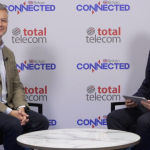VIEWPOINT
The global digital industry, enabled by 5G, continues to move from strength to strength. In the last four years, 5G has not only gained one billion users across the world but is also playing a crucial role in the digitalization of all industries.
“All stakeholders from across the industry will need to work together, exploring innovative ways to connect people, homes, industries, machines, and vehicles. We will have to create new value with 5G to unleash digital dividends as it delivers higher traffic, more extensive connectivity, more reliable latency, and ubiquitous cloud services and intelligent applications,” says Li Peng, Corporate Senior Vice President, President of the Carrier BG at Huawei. He was delivering address, Creating New Value with 5G to unleash Digital Dividends at Mobile World Congress Shanghai 2023.
Modernizing networks to meet evolving consumer demands
A key reason for the growing 5G adoption is the ever-growing demand for new experiences in the consumer market. This is fostering innovation in this segment leading to the development of new forms of content and application, which are expected to drive future growth.
“To meet these high demands, the Chinese carriers have been promoting new applications like New Calling, cloud phones, and naked-eye 3D. New Calling helps carriers better connect consumers using video-based calls. The application facilitates communication in both personal and professional settings, making remote work easier. A single New Calling user can generate over 1 GB of data per week,” explains Li Peng.
On the other hand, cloud phones are being used in China to support cloud gaming, mobile office and more. Naked-eye 3D helps users enjoy higher-definition content from more perspectives. This application’s value chain is rapidly maturing, and the traffic generated by naked-eye 3D content will see a three-to-ten-fold increase compared with 2D videos.
However, for service providers to deliver these innovative applications requires them to upgrade their networks to deliver 10Gbps connectivity.
“Spectrum resources will have a big role to play in this network upgrade. The industry needs access to new frequency bands, including the 6 GHz and mmWave bands, as well as sub-100 GHz spectrum for 5G New Radio,” says Li Peng. Huawei has conducted field tests to demonstrate that a 10Gbps downlink speed can be achieved on the 6GHz band with the help of Extremely Large Aperture Arrays (ELAA). Even so, the growing digital ecosystem means that the demand for new 5G frequency bands will continue to grow as new applications emerge.
“There needs to be more 5G chips, IoT modules, and devices that support new spectrum bands. More efforts will be needed to pilot new applications around the world,” he adds.
This ever-increasing demand for improved experiences in the home segment means that the telcos would need to improve user experience.
“We believe the smart home market will develop rapidly in the next decade. To help carriers maximize the potential of this market, we launched 5G FWA Square solutions. We have FWA Pro for ultrafast connectivity, FWA Lite for cost-effective connectivity, and FWA Biz for the highly reliable connectivity required in industrial scenarios,” elaborated Li Peng.
Huawei is also working with carriers to explore FTTR [Fiber-to-the-Room] innovation and drive technology and business upgrade. This enables carriers to provide gigabit Wi-Fi connections to all parts of the premises without impacting the quality, paving the way for the telcos to adopt an innovative business model. “Early adopters of FTTR have already seen more than 30% increase in the ARPU of their home broadband services as well as a huge drop in their churn rate,” explains Li Peng.
Accelerating digital transformation of the enterprises with 5G
Unlike the previous technologies, 5G is helping enterprises accelerate digitalization and use it to grow production and efficiency. Huawei has helped conduct a trial of the industry’s first 5.5 G-enabled production line. The trial demonstrated that the 5.5G deterministic network guaranteed ultra-high reliability and reduced latency to 4 milliseconds in a high-concurrency environment.
Growing importance of 5.5G
“Customers will require new services and experiences in new scenarios, so carriers will need to upgrade their networks to 5.5G, in order to support 10 Gbps downlink, 1 Gbps uplink, and 100 billion IoT connections. 5.5G will open up unlimited opportunities for carriers,” says Li Peng. The industry is moving towards this with the 3GPP’s Release 18, the first standard for 5.5G to be released in the first half of 2024.
All the industry stakeholders will need to work together to drive the adoption of 5.5G to spur innovation in this segment and to be able to maximize the revenue potential of this technology.















